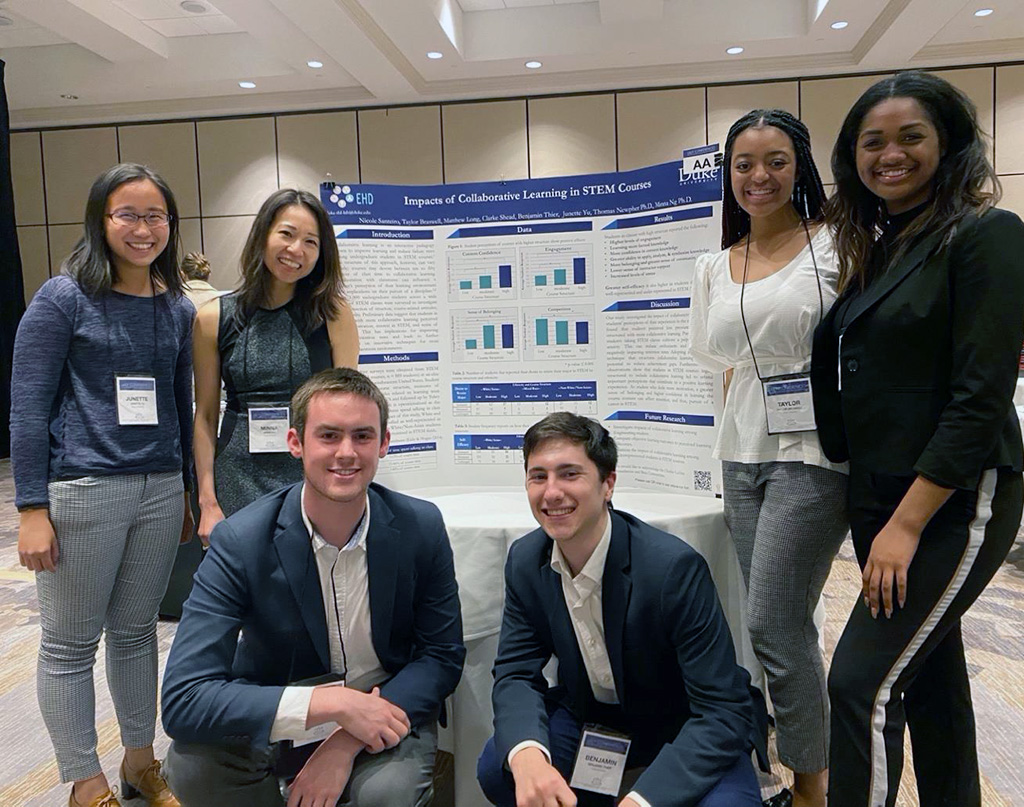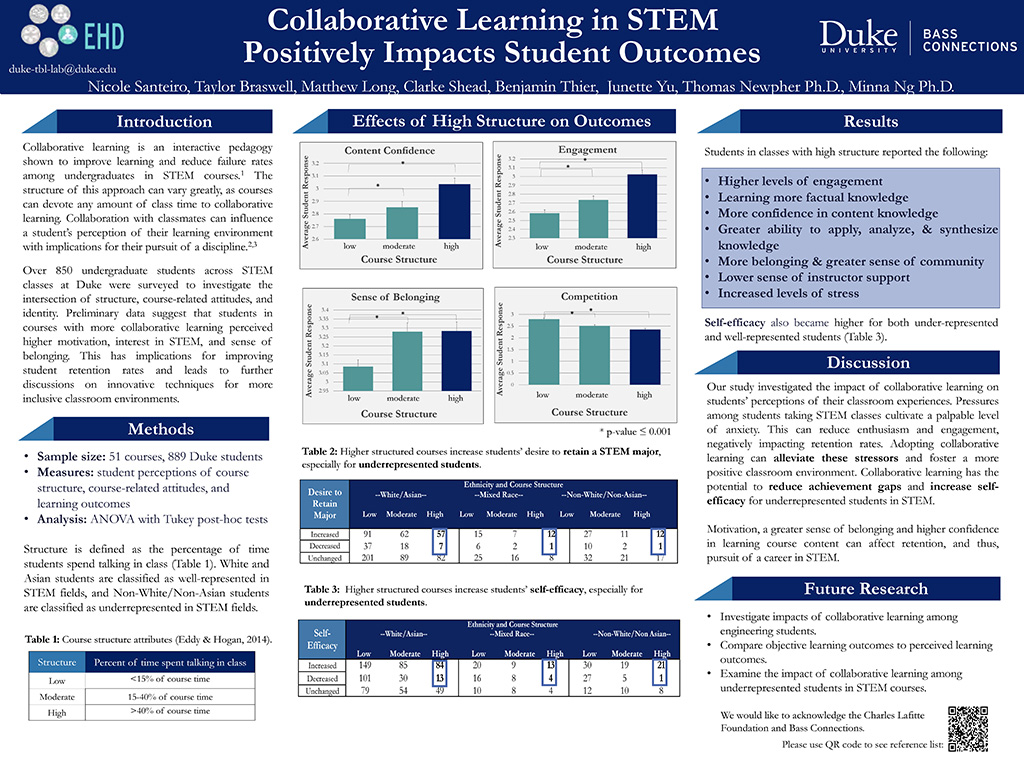How Course Structure Impacts Student Outcomes
Project Team

Team profile by Taylor Braswell
The Science, Technology, Engineering, and Math (STEM) field is a vast discipline that continues to grow and change lives—18% of students receiving a Bachelor’s degree major in a STEM field, with the number steadily increasing. While race and ethnic diversity continues to increase in the United States, representation within the STEM field is far behind. In fact, in some cases, there has been a dip: the percentage of women of color that entered computer science fields was higher in the 1980’s than it is now. This is disconcerting. Diversity offers different ideas, perspectives, experiences, and questions critical for cultural sensitivity and ingenuity. This synergism brings life to novel medical treatments, policy development, and academic pursuits. It is imperative that we prioritize and implement strategies to promote diversity and representation of minds across the race, ethnic, sex and gender spectrums.
The lack of diversity in the STEM field is due, in large part, to the racial and ethnic disparities present in postsecondary education and the underrepresentation that comes with these inequities. To combat this, education researchers are working to identify inclusive teaching methods that help all students learn and increase retention in STEM. One such innovative pedagogy that has shown many benefits for underrepresented minorities is collaborative learning. Collaborative learning is an evidence-based instructional strategy that deepens student learning by facilitating engaging classroom discussions among students. It is designed to promote discovering, processing, and applying information learned in the classroom.
STEM courses taught by traditional approaches have the potential to create a stressful and non-inclusive environment, which reduces self-efficacy and retention of underrepresented students. Importantly, recent studies have shown that high structure STEM courses, with a large percentage of classroom time dedicated to student interaction, decrease achievement gaps, and reduce failure rates for underrepresented students. It is thought that these effects are driven by the use of spaced practice, consistent feedback, and social learning which creates a sense of belonging and interdependent community of learners. The increased sense of belonging and opportunities to practice may help improve student self-efficacy and STEM retention rates for underrepresented students.
Our Bass Connections team tested whether collaborative learning improves self-efficacy and the desire to stay in STEM fields in underrepresented student populations. Our team created a survey to measure the impacts of STEM course structure on course- related attitudes and learning outcomes. We surveyed over 850 students across various STEM classes from the Trinity College of Arts and Sciences.
Our results showed that students in classes with higher structure showed:
- higher levels of engagement
- increased factual knowledge
- more confidence in content knowledge
- greater ability to apply, analyze, and synthesize knowledge
- increased sense of belonging
- and a greater sense of community.

To share the initial findings of our work, undergraduate team member Ben Thier (Trinity College ’20) and team leader Thomas Newpher, Ph.D. (Assistant Professor of the Practice in Psychology and Neuroscience), were selected to speak at the TEDx Duke 2020 conference. Thier reflected on this experience:
For me, a big part of being involved in educational research is figuring out how we can translate important findings to our educators. There is often a disconnect between what is researched and what is put into practice, so I remain committed to helping bridge that divide.
When Dr. Newpher and I were given the incredible opportunity to present our findings from Bass Connections at a TEDx Duke talk in February, I knew this would be just the right platform to help with that goal. We practiced for weeks on end - I would fall asleep practicing my lines out loud. Delivering the talk on a topic I am so passionate about was one of my proudest and most fulfilling moments at Duke, and I am grateful to Bass Connections for providing us with the support to make it happen.
In addition to the TEDx Duke event, our team was selected to present at the Teaching for Active and Engaged Learning 2020 Lilly Conference in San Diego, California. We prepared a poster for the Lilly Conference and remain focused on writing a manuscript describing our research.

Our team hopes that these findings may pave the way for future research on collaborative learning with the goal of identifying pedagogies that increase representation within the STEM field at Duke and across institutes of higher education in the U.S. Promoting the use of inclusive classrooms, in turn, can help increase retention rates in STEM for underrepresented students and ensure that the STEM field represents the U.S.’s growing diversity.
Impacts of Course Structure on Learning Experience
Presentation by Clarke Shead and Matt Long
Collaborative Learning in STEM Positively Impacts Student Outcomes
Poster by Nicole Santeiro, Taylor Braswell, Matthew Long, Clarke Shead, Benjamin Thier, Junette Yu, Thomas Newpher and Minna Ng
The Changing Landscape of Higher Education
Talk by Thomas Newpher and Ben Thier, TEDxDuke 2020: (un)familiar, Duke University, February 9, 2020

